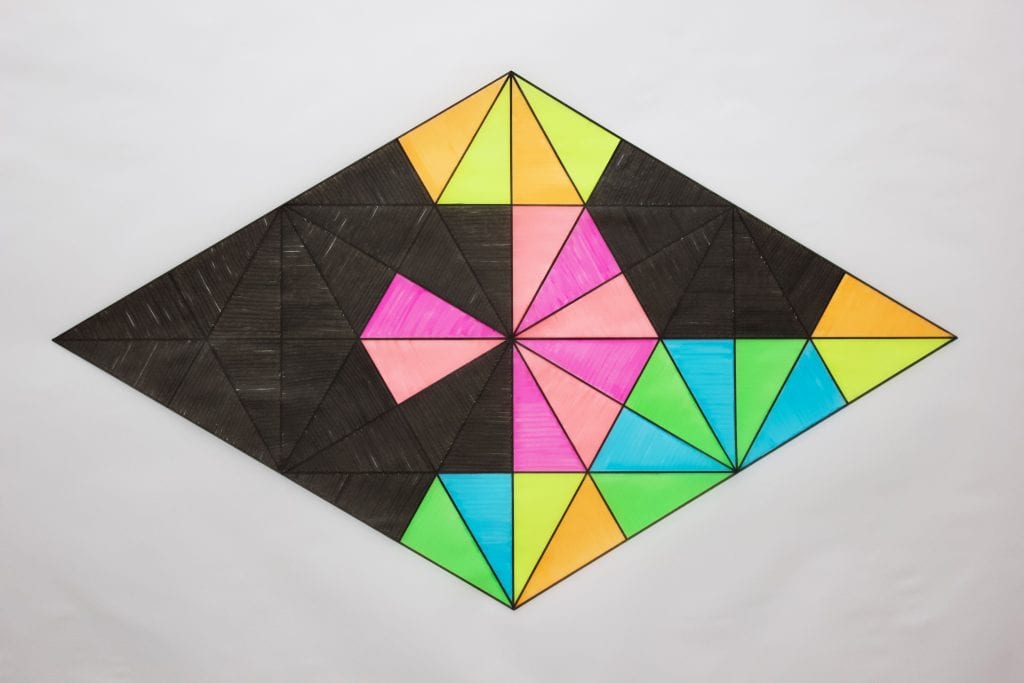
A1 translucent paper, highlighters and black ink pen
Timothy Morton coined the term ‘hyperobject’ to define things that can be situated in more than one place at once, spread over vast amounts of space, that span time. [1]
In ‘Being Ecological’ (2018), Morton refers to the fatigue of the digital age as a ‘confusing information dump’, that to understand the gravity of our ecological situation is to relate to the world around us by ‘liv[ing] ecological knowledge’ and bridging the ‘mysterious’ gulf between objects and data by taking an experiential and reflexive approach and ‘start to live the data’. Morton refers to an invisible ‘force’ that underlies the connectedness of things, which requires ‘attunement’ on our part, by taking a paradigm shift in our relationship to the world. [2]
In the chapter ‘Smashing Screens’, from ‘What comes after Farce’ (2020), Hal Foster refers to the artist Hito Steyerl and her use of the term ‘The algorithmic nonconscious’, defining the digital within her practice as being against our interests and without our agency, in which Steyerl attempts to identify with technology as a thing. [3]
[1] Morton, T. (2013) Hyperobjects: Philosophy and Ecology after the End of the World’ Minneapolis: University of Minnesota Press
[2] Morton, T. (2018) Being Ecological. Penguin Random House UK: Pelican,
[3] Foster, H. (2020) What Comes After Farce? Verso Books
